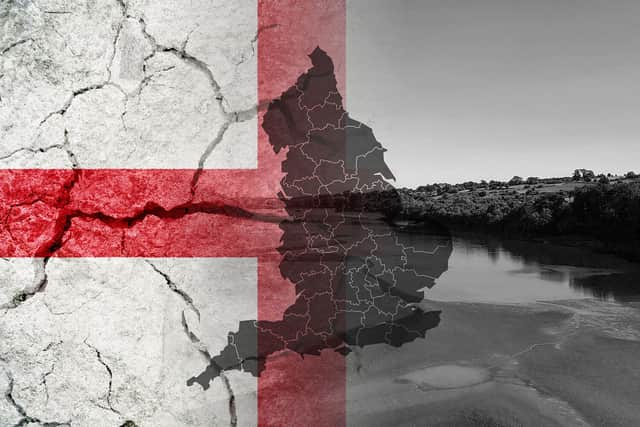England regions at risk of drought after driest February for 30 years and river levels hitting all-time lows
and live on Freeview channel 276
Large parts of England are at risk of drought this summer after the country has seen its driest February for 30 years, experts warn.
Rivers and reservoirs that supply drinking water and feed crops rely on winter rain to top up before spring. However, some rivers in England and Wales ran their lowest on record last month, according to data from the UK Centre for Ecology and Hydrology (UKCEH).
Advertisement
Hide AdAdvertisement
Hide AdThe River Trent in the Midlands, Erch in north Wales and Warleggan in Cornwall all broke their records for lowest water levels last month.
The experts explained that without “unseasonably sustained rainfall" in the coming months, South West England and East Anglia are at risk of drought.
Drought was declared in England and Wales last summer, leading to hosepipe bans, farmers losing crops and some wildlife dying.
Last month rain was in short supply in Wales and Northern Ireland, with Wales seeing just 22% of its average for the month and reservoir levels at their lowest for February since 1996 - which supply drinking water to millions.
Advertisement
Hide AdAdvertisement
Hide Ad

Low river flows are a serious threat to wildlife as they concentrate pollution, reduce oxygen levels and can affect fish breeding patterns, Joan Edwards, director of policy for The Wildlife Trusts, told BBC News.
She said: “Last summer’s devastating droughts should be the wake-up call to protect the most precious of resources - water.”
Dry weather also poses serious problems for farming and food supplies. In East Anglia, just 2.4mm of rain fell on Andrew Blenkiron’s farm compared to the usual amount of around 50mm for February.
Low river levels meant he had little water to fill his reservoir and has now been forced to cut back on plans to plant potatoes, onions, parsnips and carrots by around a fifth.
Advertisement
Hide AdAdvertisement
Hide AdThe dry conditions in February highlighted "the need to remain vigilant" a spokesperson for the Environment Agency told BBC News.
They said: "We cannot rely on the weather alone, which is why the Environment Agency, water companies and our partners are taking action to ensure water resources are in the best possible position both for the summer and for future droughts.”
In a three-month forecast released by the Met Office the chances of a dry spring are higher than normal.
Last month the chair of the National Drought Group, John Leyland, warned that England was just one dry spell away from drought this summer.
Advertisement
Hide AdAdvertisement
Hide AdMeanwhile in the rest of Europe warnings are in place for dry conditions, including in France and Spain. This could further affect supplies of tomatoes and salad.
The warning comes amid fears of a hosepipe ban this summer due to water shortages.
The government’s climate aides fear there could be an “acute risk of water shortages” if ongoing dry weather persists into May, which it is forecast to.
The NIC warned the UK is going to have to find an extra four billion litres of water a day by 2050, and government investment must rise to £700 million a year to protect against drought. It said part of the solution is plugging the leaks in the water network.
Advertisement
Hide AdAdvertisement
Hide AdWater companies are planning for 12 new reservoirs by 2050 - but all are subject to a lengthy and complicated planning process.
Previous plans for a reservoir in Oxfordshire were blocked by both the government and Environment Agency.
Comment Guidelines
National World encourages reader discussion on our stories. User feedback, insights and back-and-forth exchanges add a rich layer of context to reporting. Please review our Community Guidelines before commenting.
